Review for Photographs
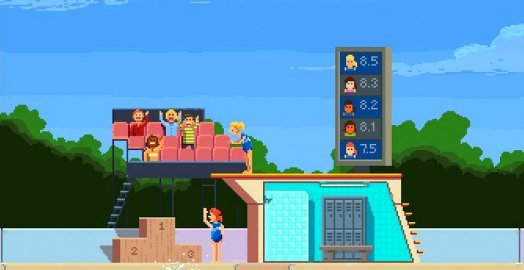
When it comes to game ratings, “mature” often tends to mean the very opposite of what it should, referring to scary games, gruesome games, foul language, nudity and the like. Yet there’s a big difference between “age appropriate” and actually “mature”, with very few games really tackling dark subject matter in an intelligent, thoughtful, adult way. With its colourful retro-style graphics and soft music box-like tunes, I came into EightyEight Games’s Photographs expecting a cute if perhaps melancholy experience, and was therefore totally unprepared for what followed. Interspersed with a series of related minigames of varying difficulty and satisfaction, its five separate tales are not fun in the conventional sense, but nor are they meant to be. Instead they’re genuinely complex character studies that are difficult to watch (and participate in), and yet impossible to look away from. I hesitate to call the game enjoyable for fear of being branded some sort of sadist, but I don’t know what other term to use for these highly compelling, deeply emotional narratives.
The first of five largely standalone stories concerns a grandfatherly alchemist caring for a young girl. The initial puzzle segment introduces the basics that will continue throughout this one particular tale. Upon completing this challenge, the game presents a Polaroid photograph from the life of the alchemist and girl, with the alchemist himself narrating their story. Following this brief vignette, the photo is dismissed and the alchemist’s home is displayed. As you progress, various elements of the home either pop in or out, including books, furniture, possessions, other people, and even additional floors on the building itself. Once the latest round of changes has occurred, a short label appears like “potions for sale”. Holding the left mouse button down then zooms in on the house, where you must drag the camera viewfinder around in order to find the area that matches the label. In the above example, hovering the cursor over a table of potions will cause the game to take a picture of them, which then launches you into the next minigame sequence.
This puzzle-photograph-home pattern is repeated throughout not only the alchemist’s tale, but the other four as well as they are unlocked in sequence. Each of the five stories features its own completely different setting, characters, narrative and respective minigame, presented one after the other with no option to select which character to follow. The alchemist’s tale starts with he and his young ward living an idyllic life in the countryside with what appears to be a fairly modern city in the distance. While everything starts bright and sunny, all that changes when the little girl contracts a rare disease. The alchemist works night and day to find a cure…and succeeds! For a time, at any rate. Photographs is not a game with the term “happy ending” in its vocabulary, so complications ensue, seriously impacting the young girl’s fate and her relationship to the old man. Watching the girl’s condition worsen through the series of still photos certainly pulls at the heartstrings, and the old man blames himself, whether that guilt is justified or not.
The second story is about a young woman who excels at diving. As we watch a small girl grow into adulthood and become a role model, her drama takes place at the local swimming pool, with higher diving boards and more spectators appearing over time. This too starts off cheerfully, with the protagonist competing only for the love of diving, but in short order it also turns dark as she falls behind and begins dragging her team down. To rectify the situation, she makes questionable decisions until hers becomes a tale of woe as well. Of all the stories, this is the one that could have been the most preachy or judgmental, but it is handled with a light touch and nuance that makes it easy to empathize with the young lady and appreciate the storytelling.
Third up is the tale of an aboriginal man who welcomes white settlers to his land. Appropriately, the backdrop here is an old west landscape framed by rocky badlands. While the two groups initially get along, eventually the settlers claim more and more of the land and there is less food for the aboriginals, leading to inevitable conflict and ultimately the imprisonment of the narrator’s people. Horrified by the situation, the narrator goes to work for the settlers as a compassionate jailer, but can’t prevent the state of affairs from degenerating. As I’d come to expect by this point, the story gets very dark by the end, but what I had not expected was how gruesome it would become. This is easily the goriest tale of the bunch, though the worst horrors are left to the imagination, heightening the tension and making the outcome seem that much more grisly.
The fourth act follows a third generation journalist whose grandfather started a newspaper based on providing uplifting stories. As time goes by the man finds that good news does not sell, so when the paper begins to crumble around him, he decides to start publishing only scandalous news. This story is set in a bustling metropolis office, evolving over time from typewriters through retro printing presses and into the modern computer age. As the reported news gets worse and worse, circulation grows higher and higher than ever before. Unlike the other characters, whose fates worsen through circumstance or misguided bad choices, the journalist embraces this dark path and all the success it entails. Even so, the narrative is conveyed in such a way that it’s possible to see how the man loses his way, step by step, and understand his reasons. Of course, his ruthlessness leaves a great deal of misery in his wake, and it’s only a matter of time before it catches up to him.
The final tale in Photographs takes a turn for the fantastic by following a preventer – an elemental witch with the ability to look into the future and see tragedies before they happen. Able to teleport to the sites of impending disasters, she uses her gifts to work unseen in saving the lives of ordinary people. Unfortunately, the witch looks into the future and sees tragedy in her own life, caused by someone she must later save to fulfill her duties as a preventer. Naturally, things only worsen for her from there. Of the five stories in the game, this is the one that most made me ponder stion its moral implications, and therefore seemed like the strongest of all.
After completing all five tales, the main character from each is brought on-screen. Here you play the hand of fate with the ability to give one – but only one – a chance to change their story. While this feels like an appropriately significant and weighty choice, Photographs makes it more technically difficult than it needs to be. Rather than simply allowing a direct selection, pairs of characters are brought up one at a time with a slider placed between them that must be dragged towards one or the other. However, the slider continually works against you, pulling slowly back towards the center. I found I did not have enough physical desk space to drag the slider in a single mouse movement. I had to pick up the mouse and reposition it two or three times, and re-grab the slowly back-drifting slider to continue. Matters are then compounded by the fact that as the slider draws close to one side or the other, the character on the opposite side starts pleading their case. This displays a speech bubble that caused my mouse hold to be broken. The slider would then move towards center again, requiring yet another retrieval to resume pulling before all progress was lost.
Photographs incorporates a progressive autosave that kicks in after solving each minigame. While this is fine for the majority of the game, I found myself wishing for a manual save option for the second chance decision. Once a choice is made on which character gets a reprieve, that person gets three additional puzzles of their usual type. Playing through the new minigames records your progress beyond the decision point, so that it cannot be restored without replaying the game entirely. I was able to drop out, track down the progress files myself and back them up so I could reload at the appropriate point to give each of the five characters a try without resorting to a complete replay, but really this shouldn’t have been necessary. Between playing through the game once in its entirety and using my save backup “cheat”, all told I spent four hours to experience each of the different endings on offer.
Regardless of who gets a second chance, each ending is shown as a series of still pictures depicting how the new version of the story turns out while the credits run. I felt only two of the characters really got good endings, with the others being just as much of a downer as the original endings, if not more so. Even the good ones aren’t really all that uplifting, as I couldn’t help but feel that I had condemned or abandoned the other four characters to some unknown fate. Of course, the fact that such emotions where evoked in me means that the scenario was doing something profoundly right. I really appreciated that the game didn’t go for “magic bullet” fixes, as that would have cheapened the whole experience.
The narrative element is definitely where Photographs truly excels, but the stories themselves are all completely non-interactive beyond taking pictures of the different scenes where each tale is set. The only notably interactive bits are the minigames paired with each character. While they’re not bad, on their own they’re not much different than what you’d find in a casual mobile app.
The alchemist’s minigames are comprised of a series of movement challenges. A grid is presented with the alchemist and the little girl represented by icons of their faces. These must be guided to their respective homes elsewhere on the game map. Moving the characters is done simply by clicking and dragging either horizontally or vertically across the grid. The two characters then move as far in the indicated direction as possible, stopping only if they hit the edge of the map or some other obstruction.
As progress is made through the story, additional elements are added to the puzzle maps, such as gates that can only be passed through one way, mud puddles that will stop a character in the middle of a move, bushes that grow and become obstacles once they’ve been walked over once, and eventually – in one of the very few instances where the story has any bearing at all on the gameplay – the little girl moving in a direction opposite to the one indicated. The way in which all the pieces of this minigame work is quite apparent, and I enjoyed solving them. Most are pretty straightforward, but there are a few head scratchers in the lot. If a mistake is made at any step along the way, an undo feature allows it to be taken back, going all the way back to the very beginning of the puzzle if necessary. As it’s possible to get a number of puzzles into a stuck state, I found this extremely useful.
For the athlete, the minigames are somewhat reminiscent of pinball machines, even employing recognizable sound effects and providing a launcher from which a ball is shot. Somewhere in the playing field, a token represents either the narrator herself or one of the other divers from her swim team. The angle of the launcher needs to be adjusted so that when the ball is fired, its path will first go through the character token before ultimately landing in a small pool of water located elsewhere. Most fields have impediments like squares or rectangles in the way that either need to be avoided or bounced off. As the puzzles progress, platforms are placed in the environment that can be independently rotated to adjust the angle at which balls will bounce. Later on, pools of viscous liquids are also included. The viscosity can be altered to control how much or how little a ball will arc when passing through them.
These pool activities display a dotted line emanating from the launcher that shows what the path of the ball will be as it bounces off the various obstacles. I’m not sure if it was intended or not, but in some levels the line would fade out before reaching the final pool destination, making it hard to gauge how the ball would behave when launched. Regardless, even with the guiding line these puzzles all felt pretty random and were just a matter of fiddling with the angles of things until the ball happened to travel from its launcher to the pool. This seemingly arbitrary nature made these puzzles my least favourite in the game. They’re not hard or frustrating, just a bit finicky and lacking in direction.
The jailer’s puzzles are significantly simpler than in either of the two previous stories. Here a simple grid is presented with various triangle or square obstacles appearing on it. Below the grid are a number of cutout shapes that must be dragged onto the playing field so that all of the exposed space is covered with no overlaps between shapes. As the tale unfolds, the number of shapes increases, although never to more than five, and the ability to rotate them is granted. Even so, these puzzles never proved challenging and were the easiest for me to complete. The only real difficulty here is getting shapes to rotate correctly, as if you’re not careful then clicking on a shape will sometimes initiate a drag move instead of rotation. It struck me as odd that such simple puzzles would be placed in the middle of the game rather than the beginning, making for a weird difficulty progression.
The fourth puzzle type involving the journalist goes the other way on the difficulty scale. I found the minigames here to be the most consistently challenging. Again the puzzles are grid-based, with each containing a square with a starting blob of ink and another with an ending blob. A virtual pen must be dragged from the starting spot to the end in a continuous line made up of horizontal and vertical segments. Early on there are a few scattered barriers that have to be navigated around. Later, erasers are added that move back and forth along predefined paths with each move of the pen. If an eraser touches the line, it is broken and a different path must be found. In some cases multiple start and end blobs are presented, and after completing one line another must be drawn with all of the same restrictions plus the additional inability to cross the existing line. I could never quite conceptualize how the erasers would move, so I found the grids that had them particularly challenging to pass. As with the alchemist’s minigames, an undo feature is provided so that a bad move can be reversed.
Finally, the preventer puzzles can best be described as Candy Crush but smaller and less dense. Again they take place on a grid with symbols such as fire, water, steam, boulders, and so on spread around. Each field has one or more people’s portraits on it as well. Spells can be cast on empty grid squares to fill them with a new element from a limited supply presented below the puzzle. Getting three or more of the same symbol adjacent to one another causes all of them to disappear. The goal is to clear all of the symbols below the characters so that they reach the bottom in order to be saved.
Complicating the procedure is the fact that different elements interact in specific ways when placed next to one another. Setting a water drop on a square next to a plant, for example, causes the plant to expand into the water drop’s square, consuming the water. Fire can be used to melt ice cubes into water, turn water into steam, or to burn plants away before disappearing itself. Some of these actions create gaps in the grid, which in turn causes other symbols above them to drop and prompt interactions of their own. With these chained reactions, it can sometimes be challenging to determine what the full effect of placing a given element will be. Fortunately, this puzzle type also provides the undo mechanism for backing up to earlier states. I found these match 3-type minigames the most varied in difficulty, with some being a breeze and others requiring a lot of thought or trial and error, regardless of how far along in the story I was. They were also the most enjoyable, as the process of saving the people actually felt like it was more relevant to the story than any of the other puzzle types.
Although barely integrated beyond the most basic thematic connection, the imposed breaks to complete these minigames do manage to build anticipation for the next story segment. The narrative bits doled out between puzzles typically left me wanting more just before the next minigame would launch, and that symbiotic relationship provided the impetus to solve what would otherwise be a fairly generic collection of abstract puzzles. In turn, the delayed gratification of having to step back and work through the puzzles helped reinforce my interest in the stories and motivated to get back to them.
Visually the game uses a consistent pixel art style throughout. The scenes to be photographed are presented rather like dioramas, with the fourth wall of buildings removed so that interiors can be seen. The backgrounds are colourful and nicely detailed, so I had little trouble figuring out what I was supposed to take pictures of. The characters are relatively small and simple, but still manage to convey a good deal of emotion in their depictions. The graphics overall are quite cute, but don’t let that lull you into a false sense of security. Tackling such material as child suicide, drug abuse, torture, genocide and rationalized murder, along with showing such things as a woman taking a shotgun blast to the face, this is definitely not an experience for the kiddies.
The audio is where Photographs feels more like a standard game. Sound effects are employed during the puzzle sequences that seem at odds with the grimness of the stories. For example, getting the characters to their homes in the alchemist’s minigames plays the sound of a golf ball cheerily dropping into a hole. In the athlete’s challenges, the ball flying around makes distinct pinball noises as it bounces off bumpers and the like. Musically, the game feels inspired by old chip tunes but with the harsh edges sanded off. Unlike the sound effects, the music does match the narratives. You can tell when the initially cheery tales are about to take a turn for the worse as the score shifts to darker, more sinister tones.
Each of the five stories is narrated by its main character and all do an excellent job, especially during the more heartfelt moments. The actors never try to overplay the emotion but instead relate their stories with a somewhat resigned melancholy, such that it does not feel like they are begging for sympathy but rather earning it. Given the quality of the performances, it’s curious then that when the final choice must be made on the characters’ behalf, voices are not employed, only text bubbles. I believe this decision would have been a harder one to reach if the actors had been allowed to offer their pleas directly. It’s a minor quibble though, with the rest of the voice work being so good.
With its clear alternating delineation between non-interactive storytelling and interactive minigames, Photographs is not an adventure game in the traditional sense of fully integrated gameplay. However, no matter how you classify it, this is a game that should appeal to anyone looking for weighty, thoughtful narratives that aren’t afraid to go places that are downright uncomfortable. On their own the puzzles would feel fairly casual in nature, but here they represent a diverting array of challenges regularly sprinkled throughout, and the end result is an intense story experience that will keep haunting you well after you’re done.
WHERE CAN I DOWNLOAD Photographs
Photographs is available at:
We get a small commission from any game you buy through these links (except Steam).Our Verdict:
Essentially five short games in one, Photographs presents a series of dark, disturbing, and above all compelling tales of woe interspersed with their own diverting puzzle minigames ranging from easy to challenging.













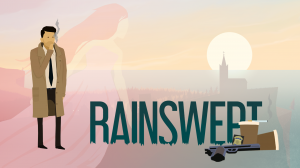

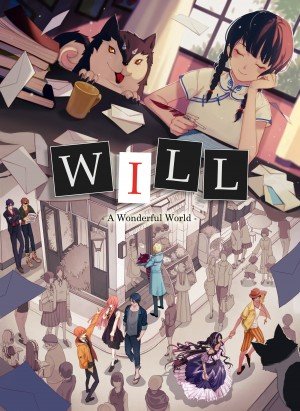
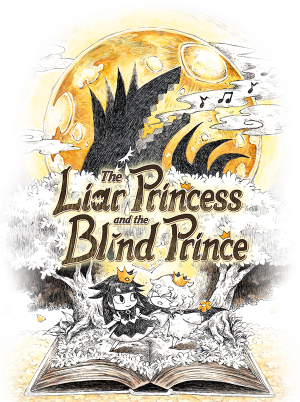


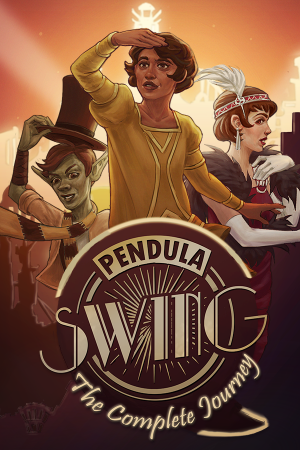
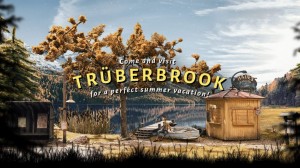



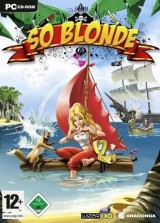

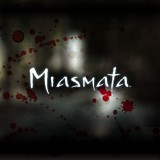


__small.jpg)

